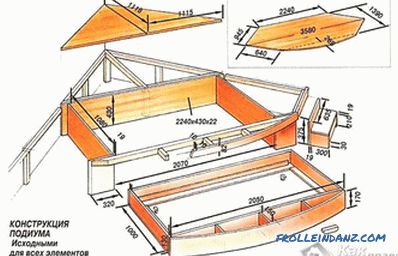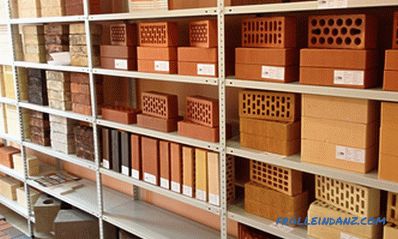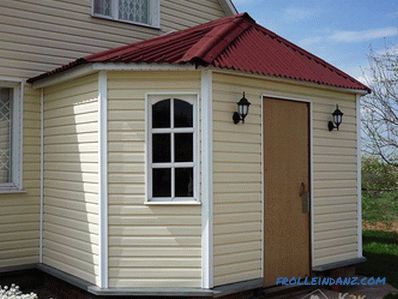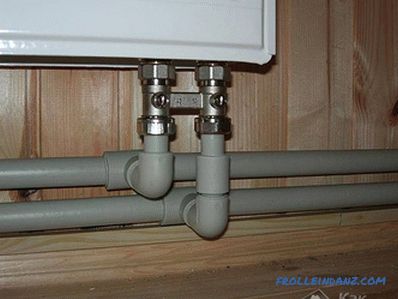Finally, the house box is ready, but another problem arises - the walls that were not planned to be plastered, have a not very aesthetic look, since there are cement blobs on them. In this case, you need to learn not only how to clean the brick from the mortar, but also how to do it with minimal damage to the material. Consider several methods by which this procedure is performed.
Mechanical method
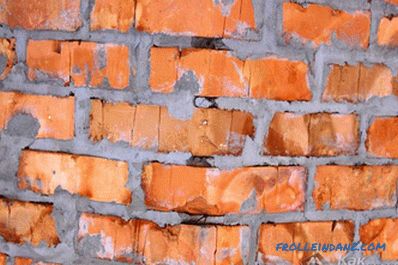 Brick that requires cleaning
Brick that requires cleaning
The most common method of removing residues mortar remains manual labor, during which excess cement is knocked off the brick. Before starting the cleaning process, you need to water the brick with water, doing so until it absorbs it. This will help soften the stuck cement, and it will come off more easily. In this way, cement spots and growths are removed. Work will require:
- Trowel.
- Spatula.
- Brush for metal.
- Chisel.
- The hammer.
- Sandpaper.
- Safety glasses and gloves.
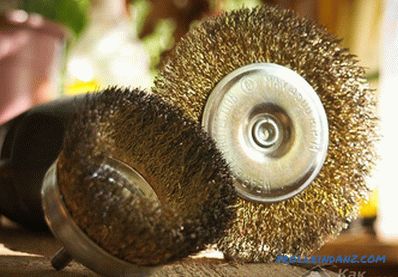 Brush for metal
Brush for metal
Spatula, brush for metal and trowel will only be suitable for small in volume stains and work at a low height. With a hammer and a chisel, you can churn large pieces of an adhering mixture. Sometimes instead of a chisel, you can use a chisel, but this tool will quickly get blunt, as it is designed to work with wood. In some cases, you can remove the hardened cement with a nail, just take into account that if the cement is firmly attached to the brick, then instead of the expected result, you get a small groove, in the hollow of which there will be a scratched brick. It is also necessary to take into account that nails are made without quenching, and therefore, this raw metal will quickly become dull and can bend at any moment.
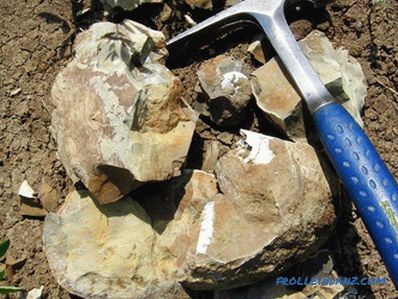 The geological hammer
The geological hammer
The use of a used brick also implies its preparation for laying, however it depends on its method of manufacture and the materials used for this, how to clean the brick from the mortar, so that it does not split, and remains suitable for further use. In this case, it is best to use a geological hammer, or as it is also called - construction. It looks like a pickaxe, but differs from it in that the working surface is not sharp. If it is not available, an ax or an ordinary hammer will do.
When working with such a tool, try to make side impacts on the cement - this will facilitate the work and prevent the brick from being damaged by its tool.
Cleaning with the tool
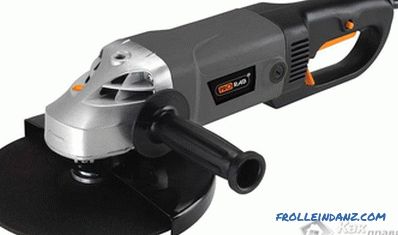 Angle grinder
Angle grinder
Working with stone physically harder, but it is easier to follow the process, so as not to remove some of the bricks. It is necessary to work more carefully with the grinder, since the process is easier, and you can, imperceptibly, ruin the appearance of the brick.
It is better to remove only the roughest part of the solution, remove the “remnants” with a brush on metal.
Cement Thinner
 Cement Solvents
Cement Solvents
Also remove from brick old cement can be using chemicals based on acid. It penetrates into the frozen solution and destroys it from the inside, after which it can be easily removed, just keep in mind that the silicate brick cannot be cleaned with acid. If you work with a ceramic brick, then this method will be the most suitable, as it is less durable, and easily breaks from strikes on it.
Where can I get acid? Buy it will not be a problem, it is only important to carefully read the instructions before the purchase, as the acid is different, and the method of processing may also differ. You can also use the acid used for car batteries. It can be found in any auto shop, but you cannot use it in its pure form, otherwise a layer of cement between bricks will collapse. Acid is diluted with water 1 * 10, and applied to the wet brick. Depending on the thickness of the adhered cement, an exposure time of 10 to 30 minutes is given, and then the acid is washed off with running water.
Afterwards white stains may appear on the brick - this is how acid manifests itself.

